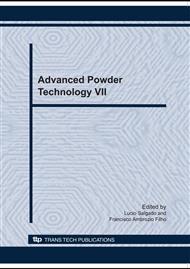[1]
W. Wersing: Curr. Opin. Solid State Mat. Sci. Vol. 1 (1996), p.715.
Google Scholar
[2]
J.F. Banfield, D.R. Veblen, and D.J. Smith: Am. Mineral Vol. 76 (1991), p.343.
Google Scholar
[3]
M.H. Lindsley: Rev. Mineral Vol. 25 (1991), p.69.
Google Scholar
[4]
C.T. Dervos, E. Thirios, J. Novacovich, P. Vassiliou, and P. Skafidas: Mater. Lett. Vol. 58 (2004), p.1502.
Google Scholar
[5]
W. Swamy, J.D. Gale, and L.S. Dubrovinsky: J. Phys. Chem. Solids Vol. 62 (2001), p.887.
Google Scholar
[6]
G. Madras, B.J. McCoy, and A. Navrotsky: J. Am. Ceram. Soc. 90 (2007), p.250.
Google Scholar
[7]
S.R. Yoganarasimhan and C.N.R. Rao: Trans. Faraday Soc. Vol. 58 (1962), p.1579.
Google Scholar
[8]
K.J.D. MacKenzie: Trans. J. Br. Ceram. Soc. Vol. 74 (1975), p.29.
Google Scholar
[9]
C. Byun, J.W. Jang, I.T. Kim, K.S. Hong, and B.W. Lee: Mater. Res. Bull. Vol. 32 (1997), p.431.
Google Scholar
[10]
Y. Li, T.J. White, and S.H. Lim: J. Solid State Chem. Vol. 177 (2004), p.1372.
Google Scholar
[11]
P.S. Ha, H.J. Young, H.S. Jung, K.S. Hong, Y.H. Park, and K.H. Ko: J. Colloid Interface Sci. Vol. 223 (2000), p.16.
Google Scholar
[12]
X.Z. Ding, and X.H. Liu: J. Alloy Comp. Vol. 248 (1997), p.143.
Google Scholar
[13]
T. Sasmoto, S. Enomoto, Z. Shimoda, and Y. Saeki: J. Ceram. Soc. Jpn. Vol. 101 (1993), p.230.
Google Scholar
[14]
Y. Hu, H.L. Tsai, and C.L. Huang: J. Eur. Ceram. Soc. Vol. 23 (2003), pp.691-699.
Google Scholar
[15]
H. Zhang, and J.F. Banfield: J. Mater. Res. Vol. 15 (2000), pp.437-448.
Google Scholar
[16]
K.N.P. Kumar, K. Keizer, A.J. Burggraaf, T. Okubo, and H. Nagamoto: J. Mater. Chem. Vol. 3 (1993), pp.1151-1160.
Google Scholar
[17]
Y.U. Ahn, E.J. Kim, H.T. Kim, and S.H. Hahn: Mater. Lett. Vol. 57 (2003), pp.4660-4666.
Google Scholar
[18]
G.B. Song, J.K. Liang, F.S. Liu, T.J. Peng, and G.H. Rao: Thin Solid Films Vol. 491 (2005), pp.110-116.
Google Scholar
[19]
F. Matteucci, G. Cruciani, M. Dondi, and M. Raimondo: Ceram. Int. Vol. 32 (2006), p.385–392.
Google Scholar
[20]
C.K. Shin, Y.K. Peak, and H.J. Lee: Int. J. Appl. Ceram. Tech. Vol. 3 (2006), p.463–469.
Google Scholar
[21]
H.E. Chao, Y.U. Yun, H.U. Xingfang, and A. Larbot: J. Eur. Ceram. Soc. Vol. 23 (2003), p.1457–1464.
Google Scholar
[22]
R. Arroyo, G. Cordoba, J. Padilla, and V.H. Lara: Mater. Lett. Vol. 54 (2002), p.397–402.
Google Scholar
[23]
R. Vogel, P. Hoyer, and H. Weller: J. Phys. Chem. Vol. 98 (1994), p.3183–3188.
Google Scholar
[24]
A. Silva, F. Azough, R. Freer and C. Leach: J. Eur. Ceram. Soc. 20 (2000), p.2727–2734.
Google Scholar
[25]
R.D. Shannon: Acta Cryst. Vol. A 32 (1976), p.751–757.
Google Scholar


